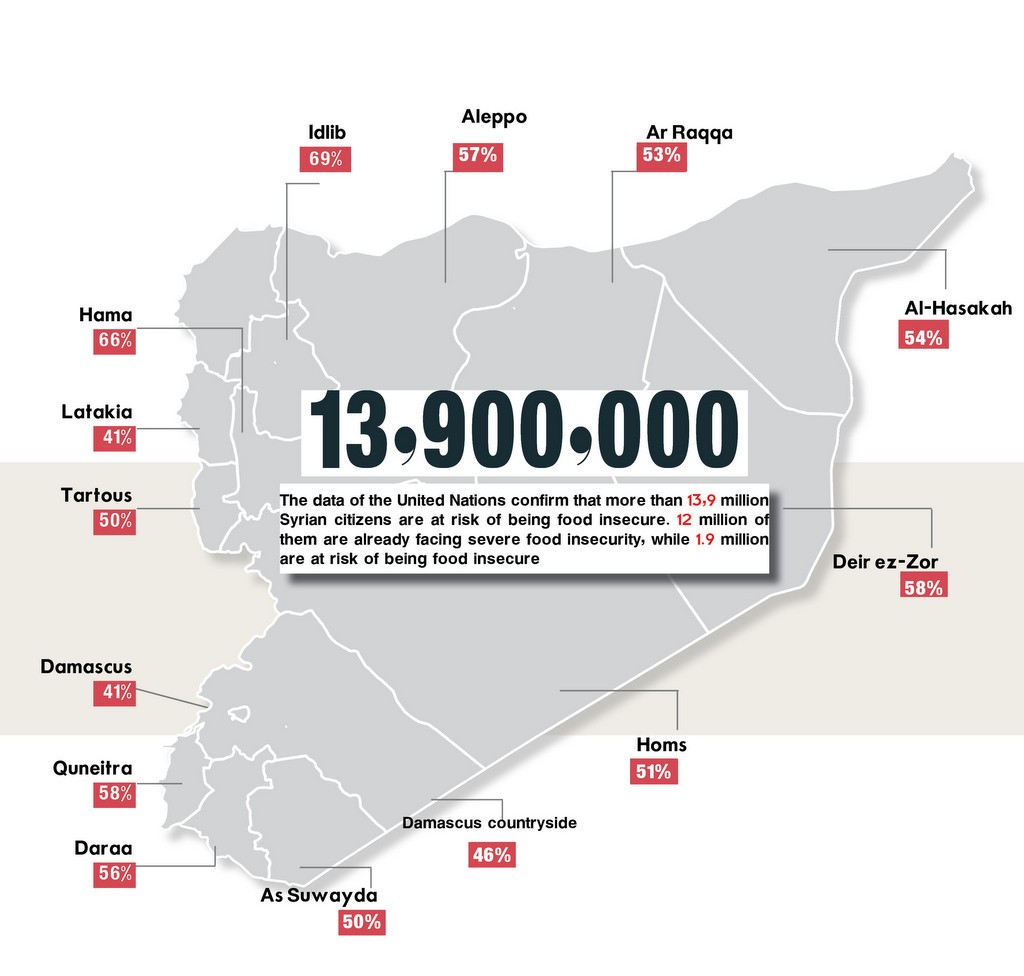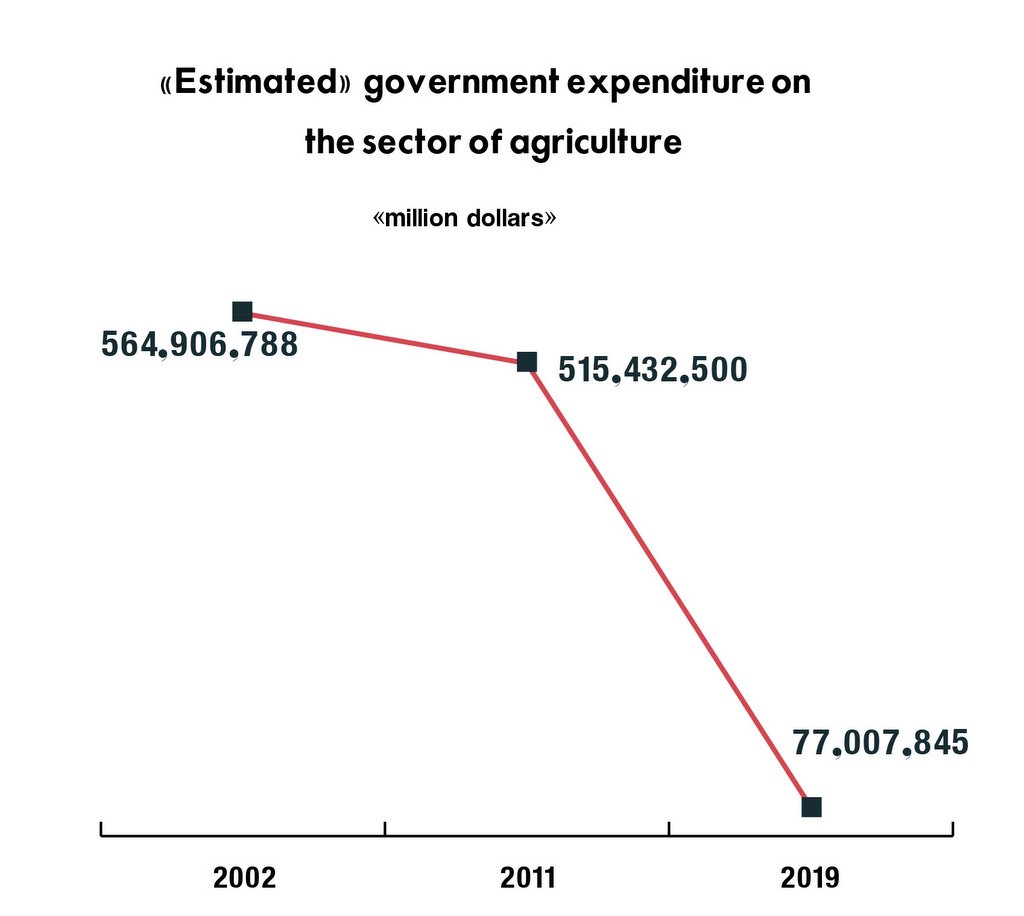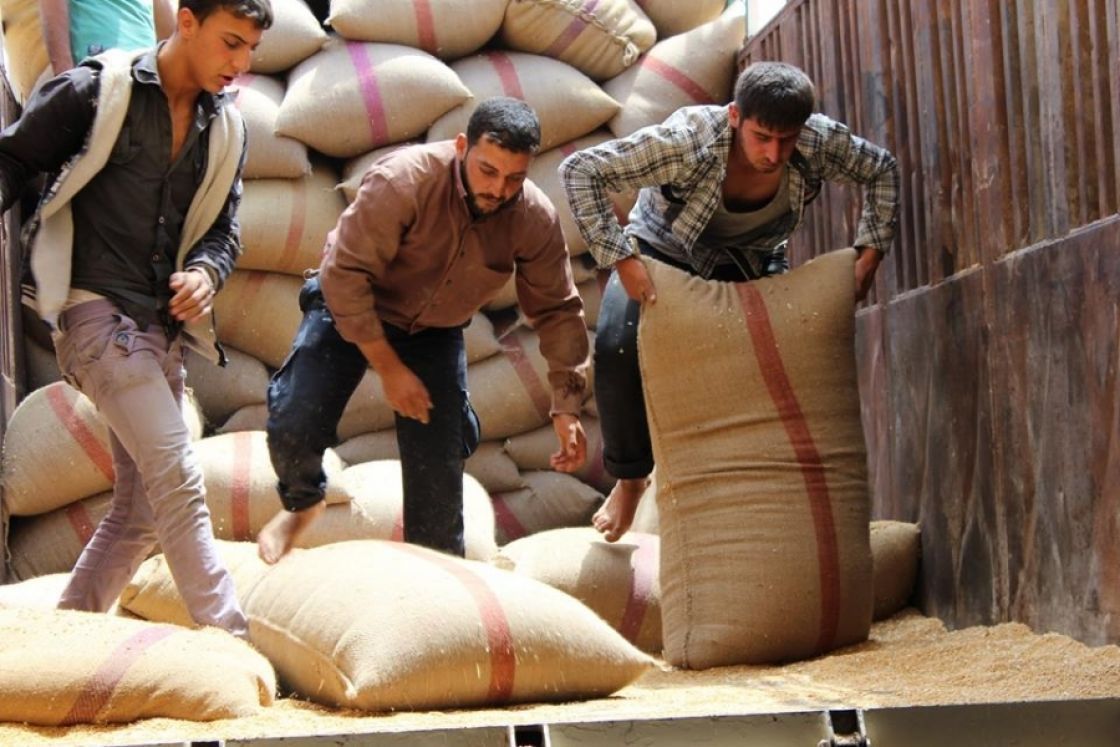- Articles
- Posted
The Food of Syrians is Subject to Fluctuations, and Agriculture Subsidies are Declining
The suffering of the country is exacerbating at all levels, and the crisis that has been going on for 11 years now is exacerbating the danger that is affecting the country at the level of agriculture and food security. In the previous issue of Kassioun, we have reviewed how the numbers of Syrians exposed to the risk of food insecurity have increased to about 13.9 million people, (12 million of them are already facing severe food insecurity, while 1.9 million are at risk of being food insecure). All this is in conjunction with the rise in local statements that are “promising us” with further decline in the field of agriculture and food, as the increase in prices has become a “global phenomenon” simultaneously with the global crisis of food and energy.
Nutrition deficiency is widespread across the country, as Syrians who are suffering from food insecurity are distributed in Idlib (69%), Hama (66%), Quneitra and Deir ez-Zor (both at 58%), Aleppo (57%), Daraa (56%), Al-Hasakah (54%), Al-Raqqa (53%), Homs (51%), As-Suwayda and Tartous (both at 50%), and Damascus countryside (46%), while the proportion in Damascus governorate reached (41%), and in Lattakia (40%).

Worse and Cheaper Food
It is not only that the deterioration of food security has affected Syrians who are no longer able to have enough food to survive, but also, millions of Syrians are suffering from what can be considered as a major disruption of diet. According to the estimates of the World Food Programme (WFP), a significant change in the behavior of Syrian families has occurred, that was evident in their inability to eat proteins, fruits, dairy products, and legumes, and their reliance in nutrition on sugars, fat, and vegetables only. So, this highlights the significant deterioration in the diversity of the diet, which now consists of cheaper and less nutrient-rich food.
In parallel, the scarcity of water, the damaged irrigation infrastructure, and the decrease in rainfall in the absence of effective government plans, have forced farmers – especially in rural Damascus and Aleppo countryside – to rely on shallow wells to cover part of their irrigation needs. Hence, this will have negative repercussions on the reduction and depletion of groundwater, which in turn will lead to an increase in pumping costs. That is, further increase in one of the agricultural inputs will occur, in addition to the difficulties that are expected to exacerbate due to the escalating energy crisis, thus, this will lead to difficulties in securing the energy needed for agricultural operation.
Syrian Wheat; From Bad to Worse
Reduced production of wheat and other corps during the 2021 harvest season has led to a huge gap between supply and demand. Agro-climatic conditions, particularly the distribution and quantity of rainfall, are expected to be worse throughout the current growing season 2021-2022, especially in the north and south of the country. The production of wheat and barley has significantly decreased in 2021 compared to previous years due to drought factors, lack of cultivated areas and lack of productive input supplies for farmers.
According to the FAO’s preliminary results, the production of Syrian wheat for the last 2020-2021 season was estimated at about 1045 million tons, i.e., it has significantly decreased compared to 2019 season, where production reached 1345 million tons. It is also going through a catastrophic decline compared to pre-crisis seasons, where in 2011 for example, production reached approximately 3858 million tons.
Poor seasonal performance, production losses, and drought-like conditions have much affected the governorates of Deir ez-Zor, rural Damascus, Al-Hasakah, Homs, Ar Raqqa, Daraa, and As Suwayda. Moreover, warnings of shortage in wheat seeds have never stopped, as seed requirements should be met in order to guarantee the sustainability of food production. This was exploited by the United States late last year, as the United States Agency for International Development USAID sent 3000 tons of wheat for cultivation to the northeast of the country, that were found to carry “nematodes”, wheat warts, and other diseases that contribute to reducing grain germination.


Features of Hunger; Stunting in Children and Anemia
The factors that strengthen food insecurity include: high food prices, the devaluation of the Syrian pound, scarce and unsafe use of water, the spread of diseases, and the huge gap between wages and prices. Nonetheless, this would not have passed without serious consequences: according to the United Nations, 25% of the children in 58 Syrian districts have suffered from stunting, and in 44 districts, 46% of children (aged between 6 – 59 months) have suffered from iron deficiency anemia.
Government Subsidies for Agriculture; Successive Deterioration
As mentioned before, voices have been raised relying on the Arabic proverb “Well-said but ill-intentioned” saying that the increase in prices today is a “global phenomenon” due to the global food and energy crisis that is pervading the globe, particularly in the prevailing tense conditions today between Russia, Ukraine, and the United States on the Ukrainian scene. However, saying that it is a “global phenomenon” is deliberately or unintentionally turning a blind eye to the fact that the causes of the current and future increase in the prices of food commodities and other things cannot be limited to a global crisis, as government economic policies, particularly in the issue of agriculture, are mainly responsible for getting the current situation to where it is now.
Nothing can be more indicative of this than the gradual and accelerated decline in the government’s subsidies for the agricultural sector throughout years. The estimated expenditure (in Syrian pounds) of the Syrian government on the sector of agriculture “have increased” from about 29 billion Syrian pounds in 2002, to approximately 33 billion Syrian pounds in 2019. However, this same figure – if compared to the US dollar – will show us the actual decline in these subsidies. It dropped in 2019 from 564 million dollars to no more than 77 million dollars, given the fact that the figure of subsidies in general is an “estimated figure” and there is no evidence that it is actually being spent by the government in the absence of closing of budgets.


